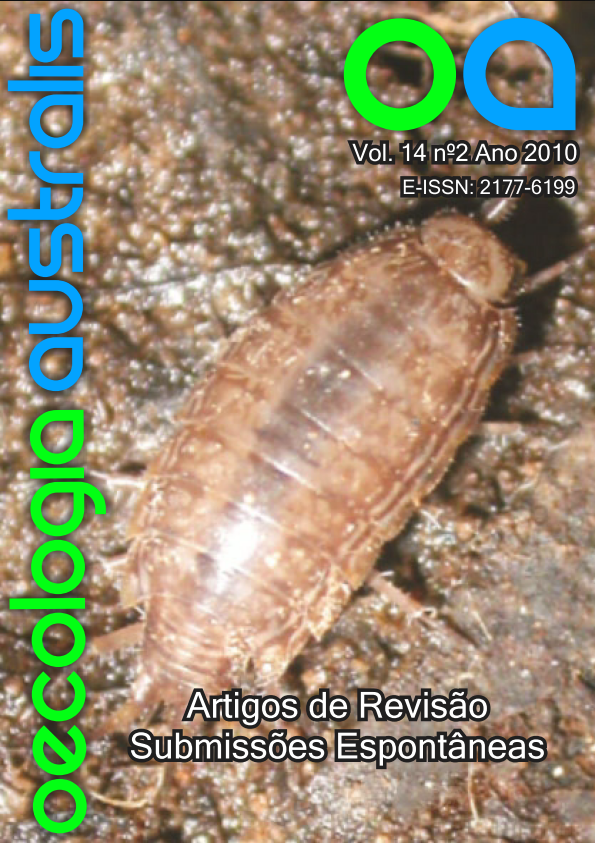CURRENT KNOWLEDGE OF THE NON-MARINE INVERTEBRATES FAUNA OF ILHA GRANDE (ANGRA DOS REIS, RJ)
Keywords:
Database, diversity, Atlantic Rainforest, faunistic inventory, Rio de JaneiroAbstract
Ilha Grande, a continental island located at Southern of Rio de Janeiro state, has important remnants of Atlantic Rainforest. However, the knowledge of the non-marine invertebrate fauna is not sufficiently well known, concerning not only taxonomic groups but also geographic areas. Considering the relevance of biodiversity inventories to conservation, allied to the absence of organized information about the existing data, we prepared a taxonomic list of the non-marine invertebrates reported to Ilha Grande, including distributional data, based on primary data of ongoing research projects and literature. The list is composed of 465 taxa of non-marine invertebrates, mainly Arthropoda (72.9%), followed by Mollusca (22.15%). Among cited taxa 25.52% are in the species category and 60% are in the genus category. The data analysis revealed an information increase since 1999 and that this information are concentrated at Vila Dois Rios region. Results show the need for improving Ilha Grande faunistic inventories, focusing taxonomic groups and areas, in order to fill the huge existing gaps.


